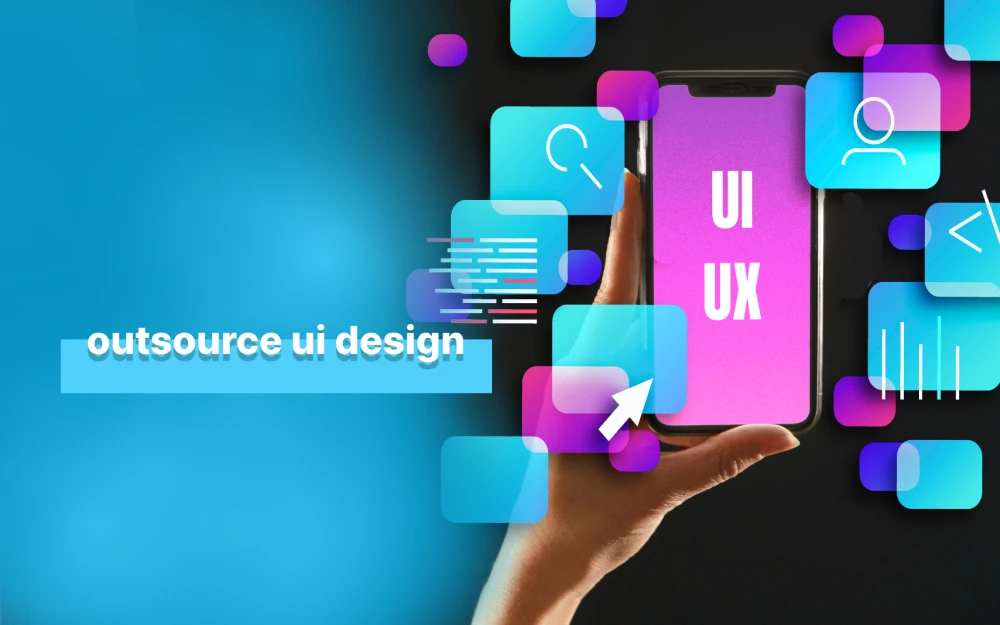What is a Scrum Master? In the realm of agile project management, the role of the Scrum Master is pivotal. Scrum Masters ensure that Scrum—a popular agile framework for managing complex projects—is understood and...
How do I become an iOS developer?
How do I become an iOS developer? The world of mobile apps is booming, and iOS apps are at the forefront of innovation and design. If you've ever dreamt of turning your ideas into reality and building the next...
What is system administration?
What is System Administration? System administration is a crucial aspect of managing and maintaining the IT infrastructure of an organization. It involves a wide range of tasks and responsibilities aimed at...
php developer job description
php developer job description In the ever-evolving landscape of web development, PHP continues to hold a prominent place. As one of the most widely used server-side scripting languages, PHP powers millions of websites...

What Is UI Design & UI Development?
Table of Contents
What Is UI Design & UI Development?
UI Design and UI Development are two distinct, but interconnected disciplines involved in creating user interfaces for software applications, websites, or digital products.
1- UI Design:
UI Design, short for User Interface Design, focuses on creating visually appealing, intuitive, and user-friendly interfaces. It involves the process of designing the look, feel, and overall aesthetics of a user interface. UI designers work on crafting the visual elements that users interact with, such as icons, buttons, menus, typography, color schemes, layout, and overall visual hierarchy. The goal of UI design is to enhance the user experience by making the interface visually appealing, easy to understand, and efficient to use.
The key activities in UI Design include:
- User Research: Understanding the target audience, their needs, and preferences through research, interviews, and usability testing.
- Wireframing: Creating low-fidelity sketches or wireframes to outline the basic structure and layout of the interface.
- Prototyping: Building interactive prototypes to showcase the flow, interactions, and functionality of the interface.
- Visual Design: Creating high-fidelity designs that incorporate branding elements, visual aesthetics, and user interface components.
- Design Iteration: Collaborating with stakeholders, gathering feedback, and refining the design based on user testing and usability studies.
2- UI Development:
UI Development, also known as Front-End Development, involves implementing the UI design into functional and interactive user interfaces using web technologies such as HTML, CSS, and JavaScript. UI developers are responsible for translating the visual design assets into code that can be rendered and interacted with by users.
The key activities in UI Development include:
- HTML Markup: Structuring the content and elements of the interface using HTML (Hypertext Markup Language).
- CSS Styling: Applying visual styles, layouts, colors, typography, and animations using CSS (Cascading Style Sheets).
- JavaScript Interactions: Enhancing the user interface with interactive behaviors, event handling, form validation, and dynamic content using JavaScript.
- Responsive Design: Ensuring the interface is optimized and adapts to different screen sizes and devices, providing a consistent experience across platforms.
- Cross-Browser Compatibility: Testing and ensuring that the interface works consistently across different web browsers and platforms.
UI Design and UI Development often involve collaboration and close communication between designers and developers to ensure the seamless integration of the visual design with the functional implementation. The ultimate goal is to create engaging and user-centered interfaces that deliver a positive user experience.
outsource UI design
Outsourcing UI (User Interface) design is a common practice where businesses or organizations delegate the design of their user interfaces to external third-party vendors or designers. This allows companies to leverage the expertise and creativity of specialized UI designers without the need to maintain an in-house design team.

Benefits of Outsourcing UI Design:
- Expertise and Creativity: Outsourcing UI design provides access to skilled designers who possess expertise in creating intuitive, visually appealing, and user-friendly interfaces. These professionals stay updated with the latest design trends, best practices, and emerging technologies, ensuring high-quality design outputs.
- Cost Savings: Outsourcing UI design can be a cost-effective option compared to hiring and maintaining an in-house design team. Companies can save on recruitment, training, salaries, benefits, and design software expenses.
- Time Efficiency: Outsourcing allows companies to accelerate the design process as dedicated designers solely focus on UI design tasks. This can result in faster turnaround times and quicker product development cycles.
- Fresh Perspective: External UI designers bring a fresh perspective and objective viewpoint to the design process. They can offer innovative ideas, unique design approaches, and valuable insights based on their experience working with various clients and industries.
- Scalability and Flexibility: Outsourcing offers scalability, allowing businesses to adjust the design resources based on project requirements. Whether it’s a small project or a large-scale development, outsourcing provides the flexibility to scale up or down without the need for additional overhead.
- Focus on Core Competencies: By outsourcing UI design, companies can focus on their core competencies and strategic goals while leaving the design aspect to the experts. This helps enhance productivity, streamline workflows, and allocate resources efficiently.
- Quality Assurance: Reputable outsourcing providers often have quality assurance processes in place to ensure the delivery of high-quality UI designs. They conduct usability testing, user feedback analysis, and iterative design improvements to create interfaces that meet user expectations.
Challenges and Considerations:
While outsourcing UI design can offer numerous benefits, it’s important to consider the following challenges and take appropriate measures to mitigate them:
- Communication and Collaboration: Effective communication and collaboration between the outsourcing team and the client are crucial for successful UI design. Clear communication channels, regular updates, and collaborative tools can help bridge any potential gaps and ensure alignment in design objectives.
- Design Consistency: Maintaining design consistency across different platforms and devices is important for a seamless user experience. Establishing design guidelines, providing detailed briefs, and conducting design reviews can help ensure consistency throughout the design process.
- Intellectual Property Protection: Ensure that proper legal agreements and non-disclosure agreements (NDAs) are in place to protect your intellectual property rights and maintain confidentiality of design assets.
- Cultural and Language Differences: Working with an offshore design team may introduce cultural and language barriers. It’s important to establish effective communication channels and foster a collaborative work environment to overcome any potential challenges.
- Vendor Selection: Conduct thorough research and due diligence when selecting an outsourcing partner. Consider factors such as the designer’s portfolio, expertise, reputation, client testimonials, and the ability to deliver on time and within budget.
Outsourcing UI design offers businesses an opportunity to leverage external expertise, creativity, and cost-efficiency in creating visually appealing and user-friendly interfaces. By partnering with specialized UI designers, companies can benefit from their skills, fresh perspectives, and efficient design processes. However, it’s important to consider the challenges and take necessary precautions such as effective communication, design consistency, intellectual property protection, and careful vendor selection to ensure a successful outsourcing engagement.




